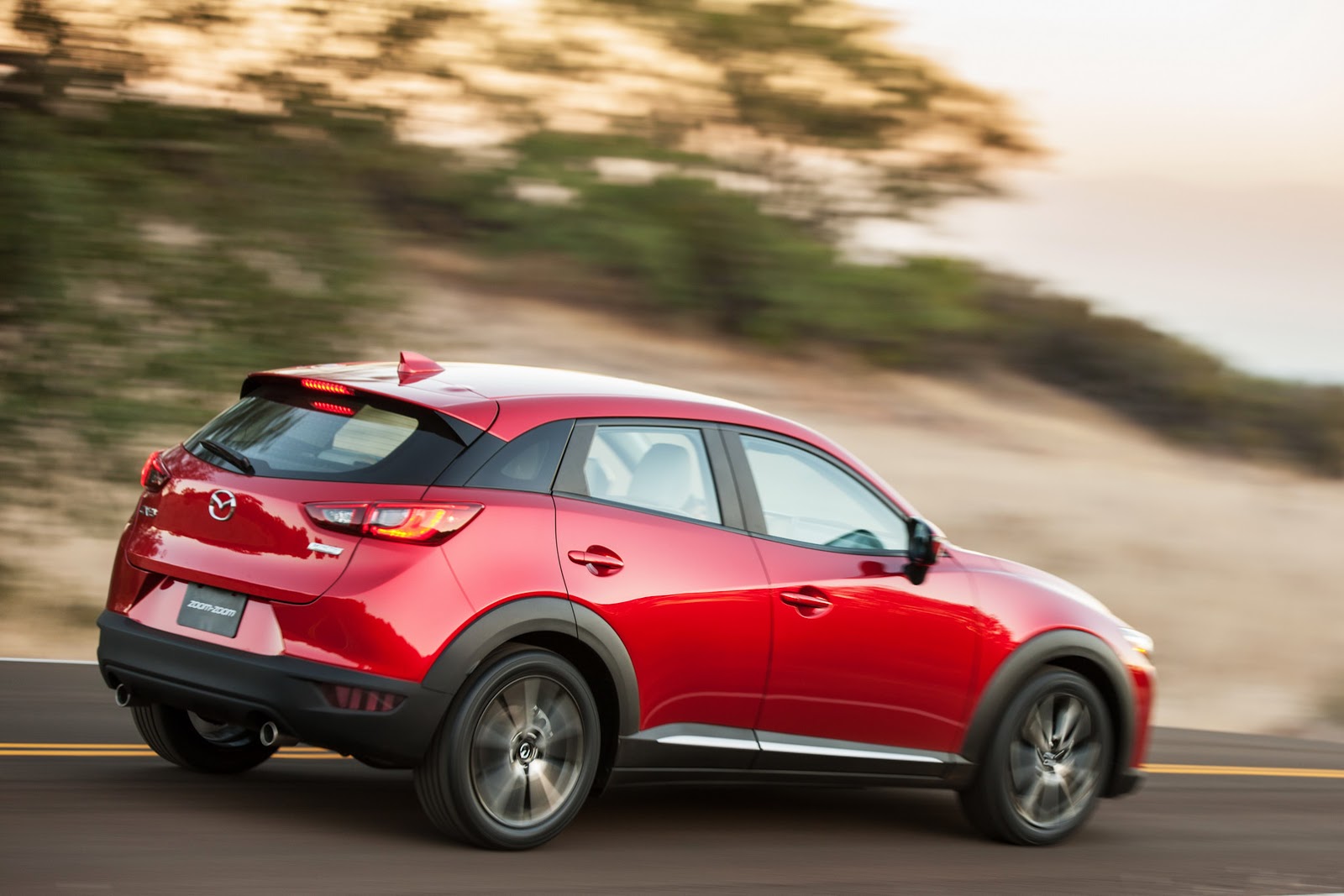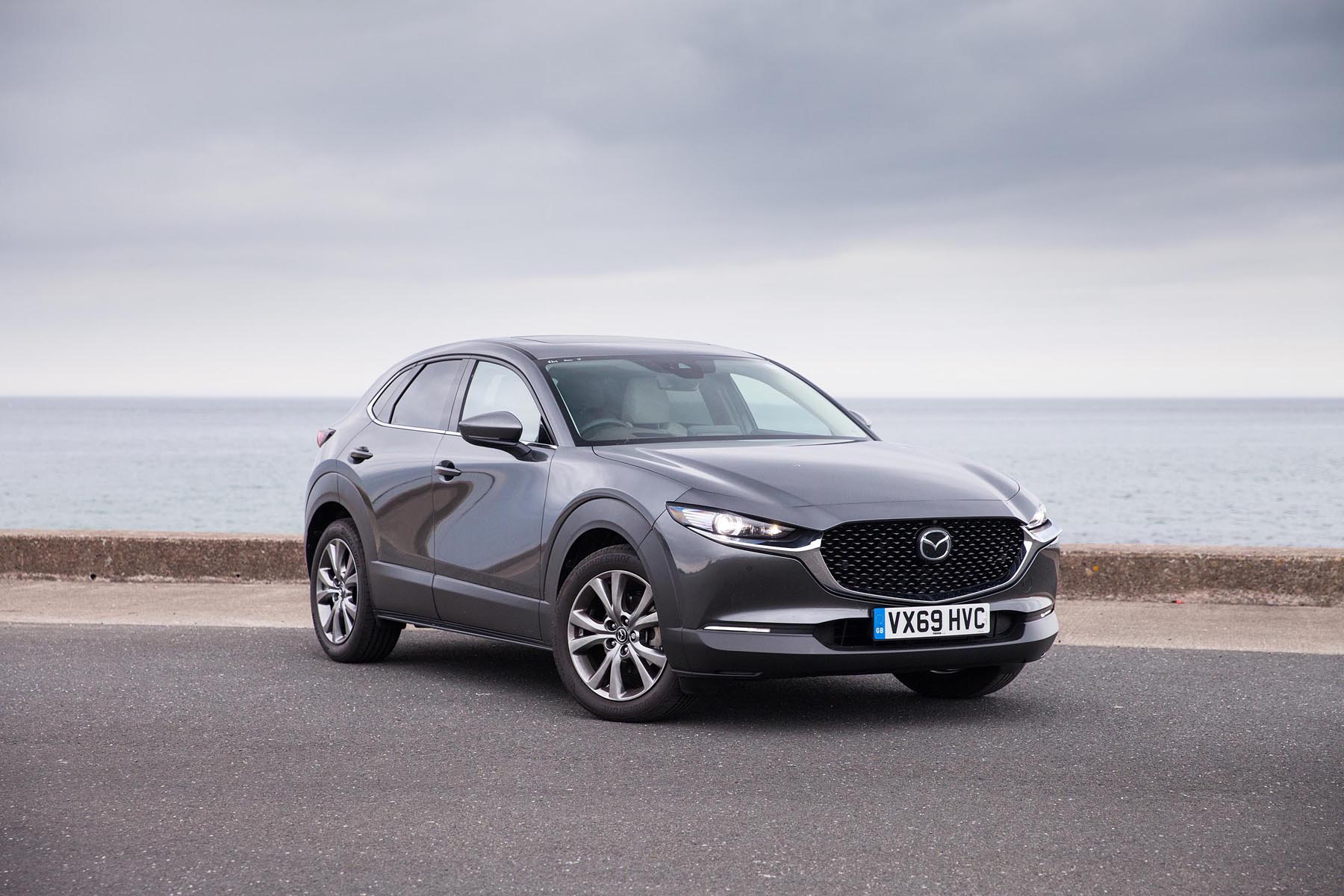
In the CX-5, however, it was just a more powerful engine in a vehicle that weighed an extra 142 kilograms. The optional turbocharged engine fits into the CX-30 like a glove. When I turned a corner, it was as if it was just me, and the tight little car was responsive to my every thought. I looked forward to driving it and flipping the paddle-shifters up and down through the six gears. I rarely say this, but the car felt like an extension of me when I drove it – like a car version of those giant robots in Avatar that people sit inside and use as vastly more powerful versions of themselves. This engine fitted into the CX-30 like a glove, and it was wonderful. Put regular fuel in and the engine is good for a healthy 227 horsepower and 310 lb-ft. This is with superpremium 93 octane gas (premium is 91 octane), for which thrifty Mazda owners are unlikely to pay the extra 30 cents a litre. Both cars have the same optional turbocharged engine, which makes 250 horsepower and 320 lb-ft of torque that kicks in at 2,000 rpm. Its centre display screen is now larger, at 10.25 inches, but it’s not touch sensitive and must be controlled through a rotary dial on the centre console the CX-30 still has a smaller 8.8-inch screen and is also not touch sensitive. Mostly, some safety options are now standard and different options have been added at the various lower trim levels. The CX-5 is now available as a 2021.5 model, which means it’s been freshened up midway through the model year. The CX-5 Signature tester (basically the same as the GT Turbo, but with every bell and whistle) comes only with “cocoa nappa leather,” but to my eyes, it just looked like more black. The aluminum and wood trim helped on the doors and black dashboard panels, but I’d have liked more contrast. The CX-30 GT and the CX-5 GT are both available with either black or white leather, and the black leather of the smaller tester was just a bit too much black. I found the interiors of both Mazdas to be too monochromatic for my taste. The CX-5 Signature tester (basically the same as the GT Turbo, but with every bell and whistle) comes only with 'cocoa nappa leather.' Mark Richardson/The Globe and Mail You won’t get out the door, after taxes, for less than $43,000. You can buy a front-wheel drive CX-30 GX with an anemic 2.0-litre engine starting at $26,200, but if you want the 250 horsepower, you have to buy all the bells and whistles of the GT upgrade, which lists for $34,000, and then add the turbo for an extra $2,400. It’s a hefty premium for the turbo engine.


I can’t say that about most of the vehicles I drive. The little CX-30 felt so well put together that I looked forward to driving it, and I’d take the longer route to get places. I drove the turbocharged CX-30 and afterward I couldn’t wait to get into its bigger cousin, the turbocharged CX-5.

Both are now available with Mazda’s peppy 2.5-litre turbocharged engine, which comes at a price but turns both cars into more powerful SUVs. It’s not just about the size but also the entire feel of the drive. The compact Mazda CX-5 and its one-size-down sibling, the CX-30, share many features, but they differ in many ways too.


 0 kommentar(er)
0 kommentar(er)
